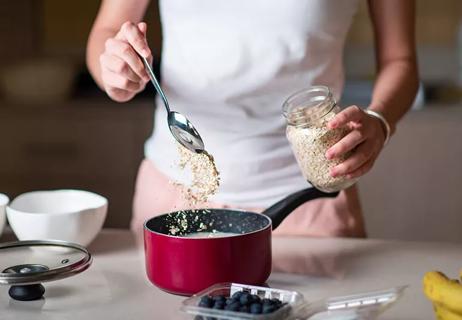Metabolic syndrome doesn’t have to lead to diabetes

Maybe your belt has gotten tighter, or your pants are snug around the waist. Then you learn your blood pressure is up, your blood sugar level has risen or your blood lipid levels are out of whack. Should you be worried?
Advertisement
Cleveland Clinic is a non-profit academic medical center. Advertising on our site helps support our mission. We do not endorse non-Cleveland Clinic products or services. Policy
Absolutely, says endocrinologist Betul Hatipoglu, MD. This cluster of findings is called metabolic syndrome, and if left unchecked, leads to trouble.
“People with metabolic syndrome have a risk of heart attack and stroke that is double the risk of people who do not have metabolic syndrome. That’s the official statistic. In my opinion, the risk is much higher,” she says.
The root cause of metabolic syndrome is insulin resistance, the first step on the road toward diabetes. Metabolic syndrome increases the risk of developing diabetes five-fold.
“A large waist is the signature finding. Fat that increases waist size causes insulin resistance,” says Dr. Hatipoglu. “There is no good test for insulin resistance, so we look for rising glucose levels.”
Patients with insulin resistance almost always have high triglycerides and low HDL cholesterol levels, as well. The trio of risk factors is key. “Together, they conspire to cause inflammation in the blood vessels, which causes heart disease,” she explains.
Metabolic syndrome is treated by tackling its individual risk factors. As each one normalizes, insulin resistance drops, and along with it, risk of heart attack, stroke and diabetes.
Medications may be necessary. Yet the key to reversing metabolic syndrome is weight loss and exercise, which work together to lower blood pressure and cholesterol and help improve insulin resistance. Unfortunately, metabolic syndrome can make losing weight a struggle.
Advertisement
“I tell patients their body thinks they are starving and is holding on to calories and fat. Your body needs to understand that it’s okay to let the fat go, and there is no single drug as strong as exercise that will give your body this signal,” says Dr. Hatipoglu. “Fat won’t melt away, but exercise opens the door to pour the fat out when you are dieting.”
Although few people welcome a prescription of diet and exercise, Dr. Hatipoglu’s recommendations are not difficult to follow:
To lose weight, avoid carbs. “Carbohydrates need insulin to be metabolized. Even if you eat a small piece of bread, your need for insulin rises, and it signals the body to hold on to fat,” she explains. “If you don’t prod the insulin, your body will use the fat you have.” She advises eating lean protein, nuts, vegetables and low-carb fruits such as berries and melon. Once you reach your desired weight, switching to a Mediterranean diet will help you maintain a healthy weight.
Move it and lift it. “I tell patients to do at least 30 minutes of exercise a day, five days a week, but that it won’t be enough. I recommend adding weight training twice a week, because muscle mass makes you more insulin sensitive,” she says. Walking, swimming, biking, dancing and even vigorous gardening or housecleaning are aerobic activities that can count as exercise. Weight training is easy to do at home. “Buy 2- or 5-pound weights and lift them while you are watching TV,” Dr. Hatipoglu suggests.
As your weight drops, your blood pressure, blood sugar and blood lipid levels will begin to normalize. Over time, metabolic syndrome will disappear.
“You’ll be surprised at how well this prescription impacts your overall health,” says Dr. Hatipoglu. “It brings your youth back fast.”
This article originally appeared in Cleveland Clinic Heart Advisor.
Advertisement
Learn more about our editorial process.
Advertisement

Fight metabolic syndrome with heart-healthy foods

Opt for foods that have a mix of protein, fiber and healthy fats

Lead with empathy, involve other caregivers, and teach them how insulin helps them live a long and healthy life

Diet adjustments and exercise can help, as can asking your doctor about medication changes

These medications can increase fertility — but the risk of taking them while pregnant isn’t well known

The good news? Prediabetes can be erased with healthy lifestyle changes, including eating more nutritious foods

Exercising more, eating healthier and managing weight can significantly improve insulin sensitivity

Fresh or frozen fruits that are low on the glycemic index should be your go-to, as they’re full of fiber and other nutrients

If you’re feeling short of breath, sleep can be tough — propping yourself up or sleeping on your side may help

If you fear the unknown or find yourself needing reassurance often, you may identify with this attachment style

If you’re looking to boost your gut health, it’s better to get fiber from whole foods